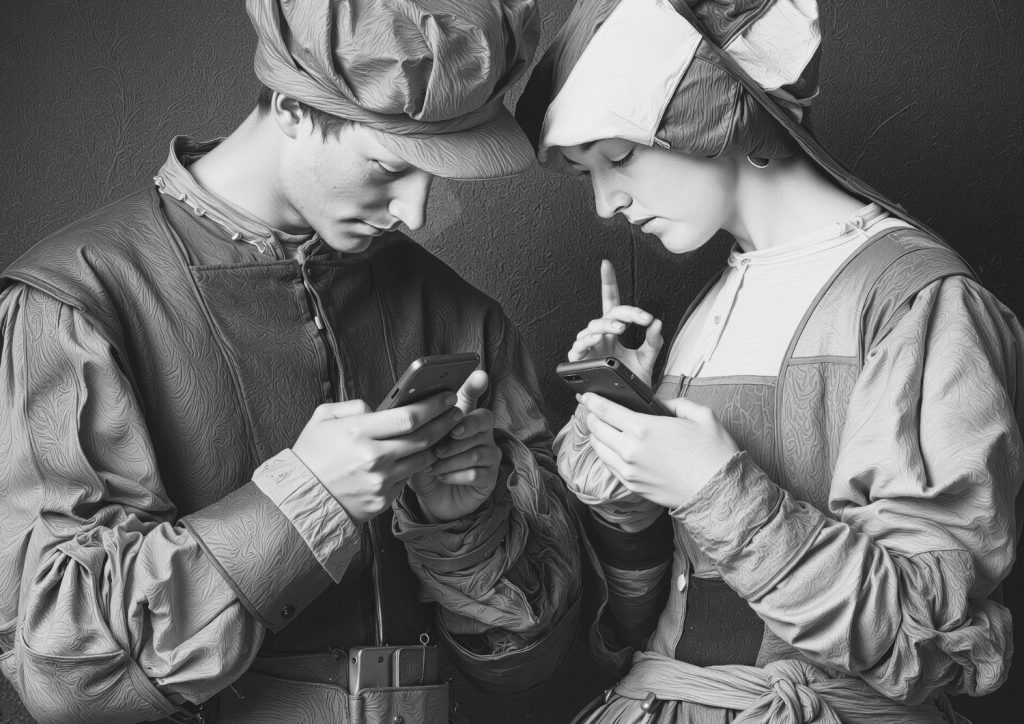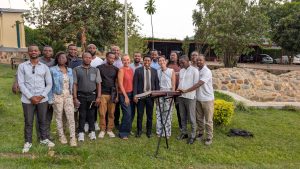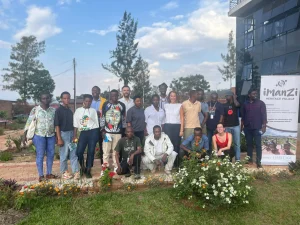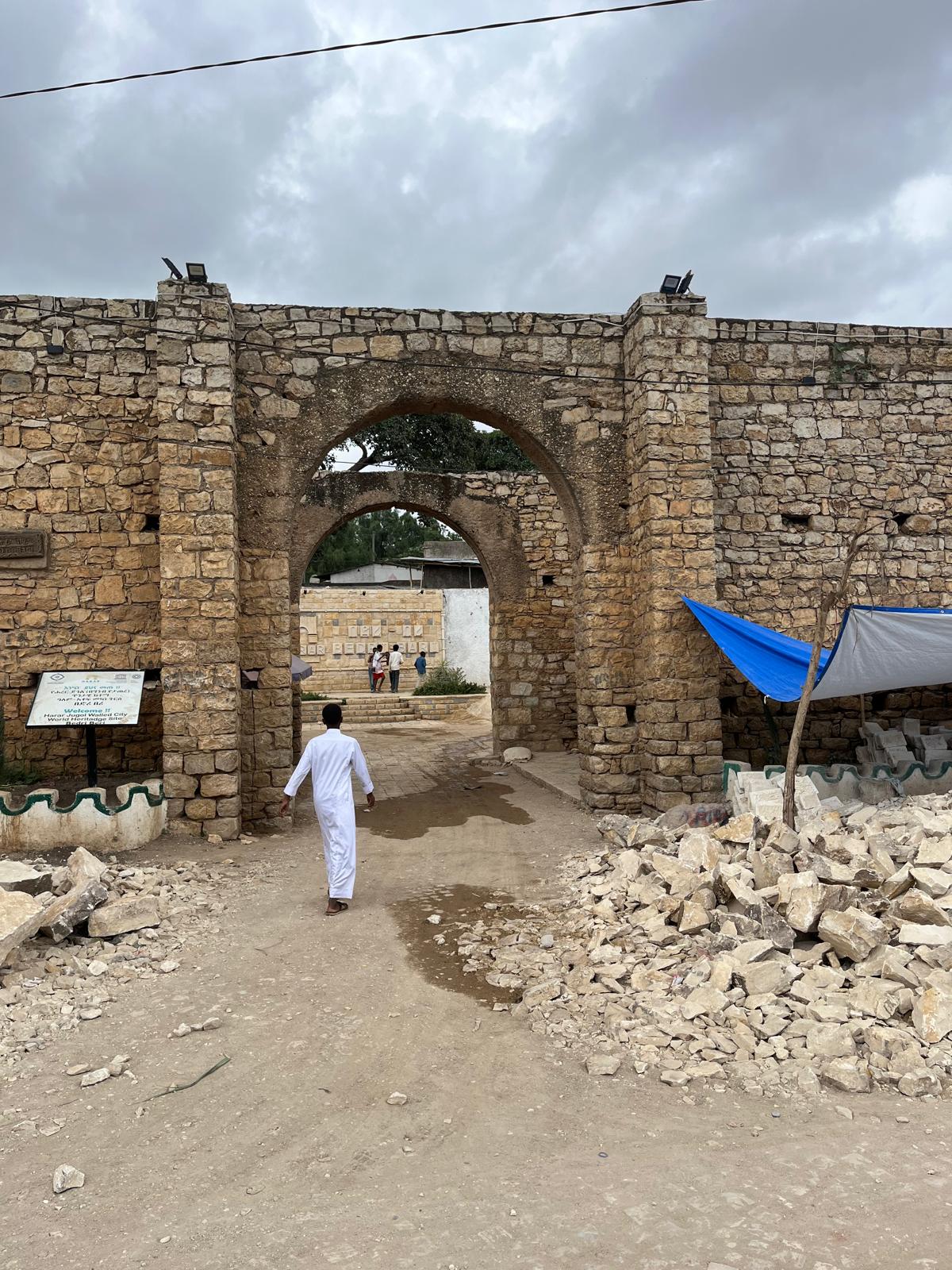: HerMaP Africa
How HERITΛGE is using Generative AI to improve cultural heritage funding
Generative Artificial Intelligence (GenAI) has taken the world by storm — transforming the way we write, design, and make decisions. But at HERITΛGE, we’re exploring how it can achieve something even more meaningful: help us understand, evaluate, and support community-led cultural heritage projects.
In 2023 HERITΛGE launched a call inviting and receiving hundreds of proposals from organizations, communities, and individuals in Africa to apply for small grants for Africa heritage projects — from traditional crafts and oral histories to sustainable tourism and cultural education. This was part of our HerMaP Africa initiative, supported by the Mellon Foundation.
The response was phenomenal. We received an unprecedented number of proposals from around the continent, over 1,700. A committee of experts was set up to examine them and decide which projects would be funded – no easy task!
To ensure that our funding decisions were fair, transparent, and data-driven, following the completion of the committee’s work, we joined forces with researchers from the Technical University of Munich (TUM) and Institute of Computer Science, Foundation for Research and Technology – Hellas (FORTH) – also our partners in the EU-funded SHIFT project, and the Group on Language, Audio, and Music (GLAM), at Imperial College London. Together, we set out to answer a simple but powerful question:
Can open, ethical AI help us make smarter and more equitable funding decisions?
The researchers, including HERITΛGE director, Dr. Evangelos Kyriakidis,introduced a framework that developed a new framework to analyze large collections of project proposals in the cultural heritage field — using a mix of established methods and the latest artificial intelligence (AI).
Our goal was to understand what themes and priorities appeared most often in proposals, and what factors might influenced their success.
To do this, we combined traditional topic modeling tools (which find recurring themes in texts) with large language models (LLMs) — the same kind of advanced AI behind tools like ChatGPT.
First, the traditional models identified broad topics across more than 1,700 project proposals focused on protecting and promoting heritage in Africa. Then, newer AI models refined these themes, helping us define them more precisely and in ways that make sense for the heritage field.
We also looked at how language was used in the proposals — for example, how complex the writing was, what tone it used (positive or negative), and whether certain patterns in language might influence how proposals are received.
This approach helped uncover hidden insights about how funding is distributed and what kinds of projects tend to succeed. Ultimately, the aim is to support more transparent and equitable funding decisions and to help cultural heritage organizations better tailor their proposals for impact.
Putting Ethics and Privacy First
While many people are familiar with AI tools like ChatGPT, these are proprietary systems that store data on external servers. When dealing with sensitive information such as grant proposals, that’s a serious concern.
Instead of sending data to the cloud, we used an open-source AI model (LLaMA3) and ran it entirely on our own secure systems. This ensured that all proposal data remained private and compliant with our ethical standards.
Finding Meaning in 1,700 Proposals
Our analysis identified 25 meaningful categories reflecting heritage priorities and emerging trends in real work on the ground in Africa— from agricultural heritage to sustainable crafts and inclusive education.
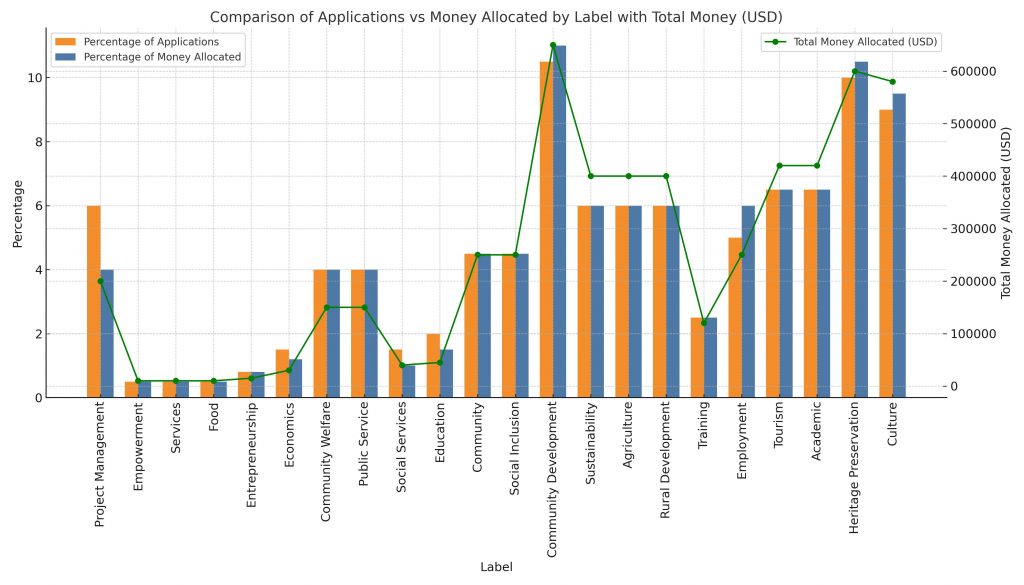 What we learnt was that Community Development, Heritage Preservation, and Culture emerged as the most common and well-funded themes. The figure below depicts how over $1 million of total allocations was apportioned among the 25 refined topics. Three leading categories—Community Development, Heritage Preservation, and Culture—each received close to $600,000. Meanwhile, areas like Social Services and Education fell below $50,000, indicating potential gaps in support.
What we learnt was that Community Development, Heritage Preservation, and Culture emerged as the most common and well-funded themes. The figure below depicts how over $1 million of total allocations was apportioned among the 25 refined topics. Three leading categories—Community Development, Heritage Preservation, and Culture—each received close to $600,000. Meanwhile, areas like Social Services and Education fell below $50,000, indicating potential gaps in support.
Interestingly, Tourism and Academic work secured comparatively large allocations despite a smaller share of total applications, highlighting a more targeted focus in these areas. Keep in mind here that applicants had to demonstrate that their project has a lasting impact, develops capacity, builds networks, strengthens local skills, and has a strong, measurable impact for the protection of heritage and the benefit of local people.
Some topics tended to appear together. Our analysis showed that strong overlaps emerged among Community Development, Culture, and Heritage Preservation, implying that community-driven initiatives often intersect with preserving local culture. Similarly, Sustainability, Conservation, and Agriculture frequently clustered, reflecting an expanding emphasis on environmentally responsible heritage initiatives. By contrast, topics like Training, Business, and Economics tended to appear in isolation—suggesting room for more integrated, cross-cutting proposals (e.g. heritage based social enterprises).
We also used sentiment analysis, readability measures, and inclusivity keywords to study the “linguistic fingerprint” of each proposal: we found that sentiment, readabilitty and inclusivity all mattered. Accepted proposals scored higher in positivity, suggesting that evaluators respond well to an upbeat, confident tone. Both successful and unsuccessful proposals were typically quite technical, indicating that complexity alone isn’t a deal-breaker. However, a moderate level of clarity—i.e., avoiding overly dense jargon—tended to correlate with better outcomes. Terms like “diversity” and “accessibility,” as well as a moderate usage of gendered pronouns, appeared more frequently in awarded projects. This underscores the value placed on inclusivity and social impact within cultural heritage funding.
In plain terms, AI confirmed that trojects using positive and inclusive language tended to perform better with evaluators, showing that tone and clarity influence evaluation outcomes. These insights can guide future applicants toward stronger, more effective proposals.
Why It Matters
By uncovering patterns in both what applicants propose and how they articulate their projects, we can provide clearer guidance for future calls and better ensure that funding reaches impactful cultural heritage initiatives.
This study shows that AI, when used ethically, can help cultural heritage professionals make funding processes more transparent, efficient, and fair. It’s not about replacing human judgment but enhancing it with better data and insights — ensuring that resources reach the initiatives with the greatest impact.
HERITΛGE and its partners will continue refining this approach as a new call for proposals for heritage projects in Mexico will soon be published, under our recently launched HerMaP Mexico initiative.
You can find the study and more information on the TUM website.
From Nyamasheke to Kigali: Empowering Communities Through Cultural Heritage in Rwanda
By Eirini Oikonomidi, Rwanda Projects Manager
During the recent, nearly month-long visit to Rwanda, two successful and highly engaged workshops were conducted under the theme: “Engaging Communities in Cultural Heritage.” The training gathered 37 heritage practitioners who offered valuable insights, exchanged knowledge, and shared on-the-ground experience.
The workshops were led by Lena Stefanou and Aris Anagnostopoulos, whose expertise guided participants through practical strategies for community involvement.
The first workshop took place in the southwestern region of Rwanda, in Nyamasheke. This location was strategically chosen because the area is considerably more remote from Kigali, marking a significant step in expanding our programme’s on-site presence. Partnering with IVOMO, who provided crucial organisation and coordination support, the workshop focused intensely on local needs and specific challenges faced by communities in the Great Lakes region. The week spent in this tropical landscape underscored the importance of reaching remote areas to ensure a broad national impact.
Following the Nyamasheke session, the second workshop was hosted in Kigali, the capital of the country. This session broadened the discussion to encompass a wider range of stakeholders, organisations, and dynamic national applications. Our essential partner, the Rwanda Cultural Heritage Academy (RCHA), as always, provided excellent logistical support, including the necessary room and materials at the Kandt House Museum.
Ultimately, both intensive workshops provided fertile ground for the exchange of knowledge, the development of strategies, and the reinforcement of the role of local communities in the protection, preservation, and utilisation of cultural heritage as a driver for sustainable development.
Field Visits and Strategic Engagement
Following the successful completion of the workshops, the remaining weeks of the mission were dedicated to crucial field visits and high-level stakeholder meetings across Rwanda. As the Country Manager, I embarked on an extensive schedule to personally visit projects on the ground, covering a significant geographical expanse—from the tranquil shores of Lake Kivu in the west, across to the Ngoma District in the east, and down into the Southern Province.
This commitment to comprehensive on-the-ground presence yielded two vital outcomes for both our organisation and our local partners.
First, for me, the visits provided a vastly improved and granular understanding of the actual situation. Observing the projects firsthand allowed me to gain immediate clarity on their evolution, their current state, the specific difficulties local teams face, and their overall trajectory. This practical insight is indispensable for effective strategic planning.
Second, the impact on our local partners and the communities themselves was equally profound. By prioritising this on-site presence, we achieved a deeper connection that served to empower the local teams significantly. Our physical presence demonstrated a genuine interest and commitment, signaling the high value we place on their efforts and achievements. We had the opportunity to meet the dedicated individuals face-to-face, fostering stronger personal and professional relationships that reinforce the communities’ sense of ownership and dedication to the long-term sustainability of their cultural heritage work.
In short, these field visits transformed our theoretical understanding into tangible knowledge, strengthening both our project oversight and the foundational local partnerships necessary for lasting impact in Rwanda.
Fisher Child lunches its immersive heritage experience
We are happy to share that TraciKwai’s Fisher Child VR Experience, one of the 75 projects funded by our Small Grants for Africa, an initiative generously supported by the Mellon Foundation, had its official launch on June 21st.
Project Fisher Child is a multidisciplinary storytelling experience that weaves together VR, AR, and QR technologies. Each element offers a unique narrative that intersects and overlaps with the others, creating a rich, immersive journey. Whether you are engaging on-site or from wherever you are, the stories remain accessible and impactful.
The launch event was a great success and was attended by 100 people who gathered at the small community hall in Kalk Bay.The guests came from both the local fishing community and the wider Cape Town area and queued in front of each of the two-by-two marked out squares, patiently waiting for their turn to experience the Virtual Reality, Living Museum of stories and images housed inside a 3D world; a repository of archival material including images, old photographs and the ancient sound of the Poedjies unique to the area.
A multi-sensory experience of sight and sound combined with the flavours and aromas of fresh indigenous food: “viskop sop”, smoor snoek en gebakte brood (fish head soup, fish stew and freshly baked bread) topped with home made preserves and spicy tea.
Community members were brought to tears as they heard the voices of old friends and family members who were no longer there and young voices gave them a sense of hope and pride and belonging.
The VR experience made them feel as though they were immersed under the sea and created feelings of nostalgia and they were able to share those memories with us after.
Age was no barrier. This experience was enjoyed by five year olds and eighty five year olds alike.
The Augmented Reality Museum Jars were also a big success, with quite a few sold on the day. Participants were so engrossed in the experience that many needed gentle encouragement to exit!
All in all a very successful community event!
Experience some of the exhibits yourself here.
Strategic Planning for Heritage Managers
From 9 to 11 May 2025, HERITΛGE hosted an online workshop on strategic planning for heritage managers, led by Dr Alexandros Papalexandris. The workshop brought together 18 participants from 13 countries across Africa and Europe, aiming to strengthen strategic thinking, build organisational capacity, and support long term planning in the heritage field.
Over three days, participants explored key concepts such as vision and mission setting, stakeholder engagement, SMART objectives, and the role of values in strategy. They learned to use practical tools including SWOT and PESTEL analysis to assess internal and external environments, and examined the differences between planned and emergent strategies.
Working in teams, participants applied these concepts to four real projects: digitising rural culture in South Africa, preserving traditional African sports and games, creating a youth heritage club in Uganda, and documenting a historic monastery collection in Ethiopia. These case studies encouraged collaborative learning and practical application.
The second day featured a guest lecture by Debashish Nayak, a leading architect and heritage expert, who shared insights from over three decades of work on urban conservation in India. His talk highlighted the importance of community involvement and education in heritage preservation, drawing on his experience leading Ahmedabad to become India’s first UNESCO World Heritage City.
The course leader really articulated everything till I really understood and I appreciate his patience through out. [The course will help me to] strategic plan and execute our vision and mission and align them.
~Paidamoyo Mandizvidza, Deputy Director Digital Content and Multimedia Broadcasting at African Traditional Sports and Games Confederation
The final day focused on competitive advantage, strategic implementation, and evaluation. Participants discussed how to align resources with organisational goals and studied cases from institutions such as the British Museum and Cirque du Soleil. They also explored the use of feasibility studies and business plans to support strategic initiatives.
The workshop was a great success, equipping participants with practical tools and strategic insights tailored to the needs of the heritage sector. Feedback was overwhelmingly positive, highlighting the value of real case studies, expert guidance, and peer learning.
For more information about HERITΛGE’s workshops, go to our open courses page, or follow us on Facebook, Twitter / X, LinkedIn or Instagram.
Countries represented: Czech Republic, Ethiopia, Ghana, Kenya, Lesotho, Niger, Nigeria, Rwanda, South Africa, Tanzania, Uganda, Zambia, Zimbabwe.
Third Online Networking Convening of Africa Grantees
 On 25 June 2025, the Africa Grants Team hosted the third online networking convening for the 2024 grantees. 65 people attended, including the grantees, HERITAGE staff, Regranting Committee members, and representatives from the Mellon Foundation and other African donors.
On 25 June 2025, the Africa Grants Team hosted the third online networking convening for the 2024 grantees. 65 people attended, including the grantees, HERITAGE staff, Regranting Committee members, and representatives from the Mellon Foundation and other African donors.
HERITAGE’s Richard A. Brown opened the session with a warm welcome, followed by Dimitra Gialesa of the Network Convening Taskforce, who thanked attendees and introduced the agenda. In this convening, twelve grantees presented their projects. The projects showcased a wide range of heritage work across Africa, including efforts to revitalise historic sites in Tanzania, promote cultural heritage in Cameroon, empower refugee women in Uganda, and build heritage museums in The Gambia.*
Following presentations, participants joined six breakout rooms organised by project type and facilitated by HERITAGE staff. These smaller groups encouraged peer discussions on common challenges and potential collaborations, with one member of the Grants Committee joining each. Discussions ranged from capacity building and craft training, restoration and documentation, to infrastructure support and heritage tourism. Encouragingly, connections were made that may lead to future collaborations.
Overall, the convening reinforced the value of these gatherings as platforms for connection and shared learning, while also highlighting challenges in participation. The team plans to maintain thematic breakout groups and encourage more focused discussions on challenges and collaboration in future convenings.
*Kelvin Fella Tanzania: ‘Improving Community Wellbeing to Rescue Bagamoyo Old
Stone Town’
Nfor Blessing Mbontu Cameroon: ‘’Smart Sacred Forests Reforestation Project’
James Agbor Ayamba Cameroon: ‘Protecting Heritage Through Promoting Culture’
Margaret Dear Kasande Uganda: ‘Supporting women and refugees in the Rwenzoris to
acquire skills and earn income from traditional basket weaving’
Hassoum Ceesay The Gambia: ‘Fort Bullen Revitalization’ (presentation delivered by
the manager Mamat Sallah)
Habab Idriss Ahmed Idriss Sudan: ‘Documentation and Protection of Hillat Dongola’
Elhadj Ould Brahim Mauritania: ‘Preserving Haratin Bondja and Medh Musical
Traditions (first stage: Adrar Region, Mauritania)’
Nfamara Tamba The Gambia: ‘’Kubuneh-Galloya Heritage Trail (The Gambia)’
(presentation delivered by Dimitra Gialesa at the end because Nfamara was facing
internet connection issues through the meeting and he was disconnecting regularly)
Sanya Gilbert Lesotho: ‘Empowering Communities: Sustainable Tourism, Heritage
Preservation and Economic Empowerment Project at Kome Caves’
Anaclet Karangwa Rwanda: ‘The Development of Imanzi Heritage Village’
Hewan Goitom Berhane Ethiopia: ‘Addis Ababa Heritage Buildings Photogrammetry
Documentation Training and Exhibition’
Bala Saho The Gambia: ‘Building A Heritage Museum and Training on the Collection
and Management of Artifacts and Oral Traditions’
Building Local Capacity for Heritage Conservation in Harar Jugal, Ethiopia
by Xanthippi Kontogianni, Ethiopian Program Manager, HERITΛGE
Harar Jugal, the fortified historic town recognized as a UNESCO World Heritage Site, stands as a living testament to Ethiopia’s rich cultural and architectural heritage. With its intricate alleyways, traditional Harari houses, centuries-old mosques, and lively open markets, Harar has long served as a cultural and commercial melting pot. The town holds immense historical value while simultaneously serving as a vibrant home for its local community. However, the preservation of this unique urban landscape is increasingly threatened by urbanization, inadequate maintenance, and the impacts of climate change.
To both leverage Harar Jugal’s potential for the benefit of its contemporary inhabitants and safeguard the historic center for future generations, there is a pressing need to develop specialized skills in heritage conservation, traditional building techniques, and sustainable urban management. Strengthening local capacity in these areas is essential to ensure that the cultural and historical integrity of Harar remains intact while responding to the evolving needs of its residents.
Walls of Harar Jugal.
In December 2024, the Culture and Tourism Bureau of Harar, one of the key institutions responsible for managing the Harar Jugal historic town, invited HERITΛGE to a virtual meeting. During the meeting, Mohammed Rabi, a representative of the Bureau, proposed organizing a heritage conservation workshop for Bureau staff and close collaborators. In alignment with its mission to train and empower heritage professionals to engage communities in stewarding their cultural assets for greater understanding, sustainability, and economic development, HERITΛGE welcomed the initiative and agreed to deliver the proposed training in Harar.
The workshop on Heritage Conservation was conducted in a blended format, combining online and in-person sessions held on 7-9 and 21-23 May 2025, respectively. This flexible format ensured accessibility while supporting dynamic, participatory learning. The training was led by Alexis Stefanis, Assistant Professor of Architectural Conservation at the Department of Conservation of Antiquities and Works of Art, University of West Attica. The curriculum was structured around three core content areas: General Principles of Cultural Heritage Conservation, First Aid for Finds, and Preventive Conservation. The online component delivered core theoretical content through lectures, readings, and discussions, while the in-person sessions emphasized hands-on exercises, group work, and live demonstrations. The workshop attracted 13 participants (8 men and 5 women) and was delivered under HERITΛGE’s HerMaP Ethiopia training program, which is funded by the Humanities in Place initiative of the Mellon Foundation.
 Networking meeting with Mr Teweleda Abdosh Ahmed – Head of Culture, Heritage & Tourism Bureau, Harari People Regional State.
Networking meeting with Mr Teweleda Abdosh Ahmed – Head of Culture, Heritage & Tourism Bureau, Harari People Regional State.
Participant engagement was enthusiastic and highly interactive. The hybrid structure facilitated broad participation, and both components were well-attended. One of the most impactful moments occurred during Dr. Stefanis’s live tool demonstration. After observing how the tools worked and understanding their applications, participants expressed a strong desire to use them directly. Encouraged by the facilitator, they took the tools outside and began applying them at actual heritage sites, collecting data and interpreting results on-site. Many cited this hands-on activity as the most transformative part of the training. Recognizing the value of practical learning, participants formally requested that the tools be made available for their ongoing conservation work.
Dr. Stefanis’s mission to Harar was supported by Natassa Nika, Africa Programs Coordinator at HERITΛGE, and Habtamu Gizawu Tola, HERITΛGE’s local representative in Ethiopia. Together, they met with key stakeholders, including the Culture and Tourism Bureau of the Harari People Regional State, the Construction Permit and Inspection Authority, and the Heritage Department of Haramaya University. These discussions highlighted the urgent need to preserve Harar’s distinctive heritage amid complex challenges. Participants identified priority areas such as capacity building in conservation and digital preservation, community engagement, and institutional strengthening.
These insights aligned with HERITΛGE’s ongoing mapping efforts in Ethiopia. Since launching its intervention program, HERITΛGE has conducted online surveys across the country to assess training needs and identify gaps in heritage management. Findings indicate that many professionals involved in conservation projects lack formal training, especially in areas such as architectural and artifact conservation.
Demonstration of tools.
The workshop and stakeholder meetings in Harar revealed not only the need for training and technical skills but also broader systemic challenges, particularly the lack of funding for project implementation and capacity development. Stakeholders emphasized the importance of collaboration, resource sharing, and establishing equitable partnerships. As a result, HERITΛGE and the Harar Culture and Tourism Bureau committed to ongoing collaboration and began developing a joint action plan.
Brainstorming sessions generated several promising ideas for future collaboration, including co-developing project proposals for funding calls, launching targeted capacity-building programs, and even establishing a university for conservation studies in Harar. As a first step, the partners agreed to draft a series of concept notes collaboratively, with the goal of developing a shared vision that would eventually lead to the signing of a Memorandum of Understanding (MoU) between HERITΛGE and the Bureau—formalizing the new partnership.
Overall, the experience in Harar marked a significant step forward in conservation capacity building and demonstrated the value of inclusive, hands-on training combined with strategic stakeholder engagement. It stands as a strong success story and a foundation for deeper collaboration in the preservation of Ethiopia’s unique cultural heritage.

